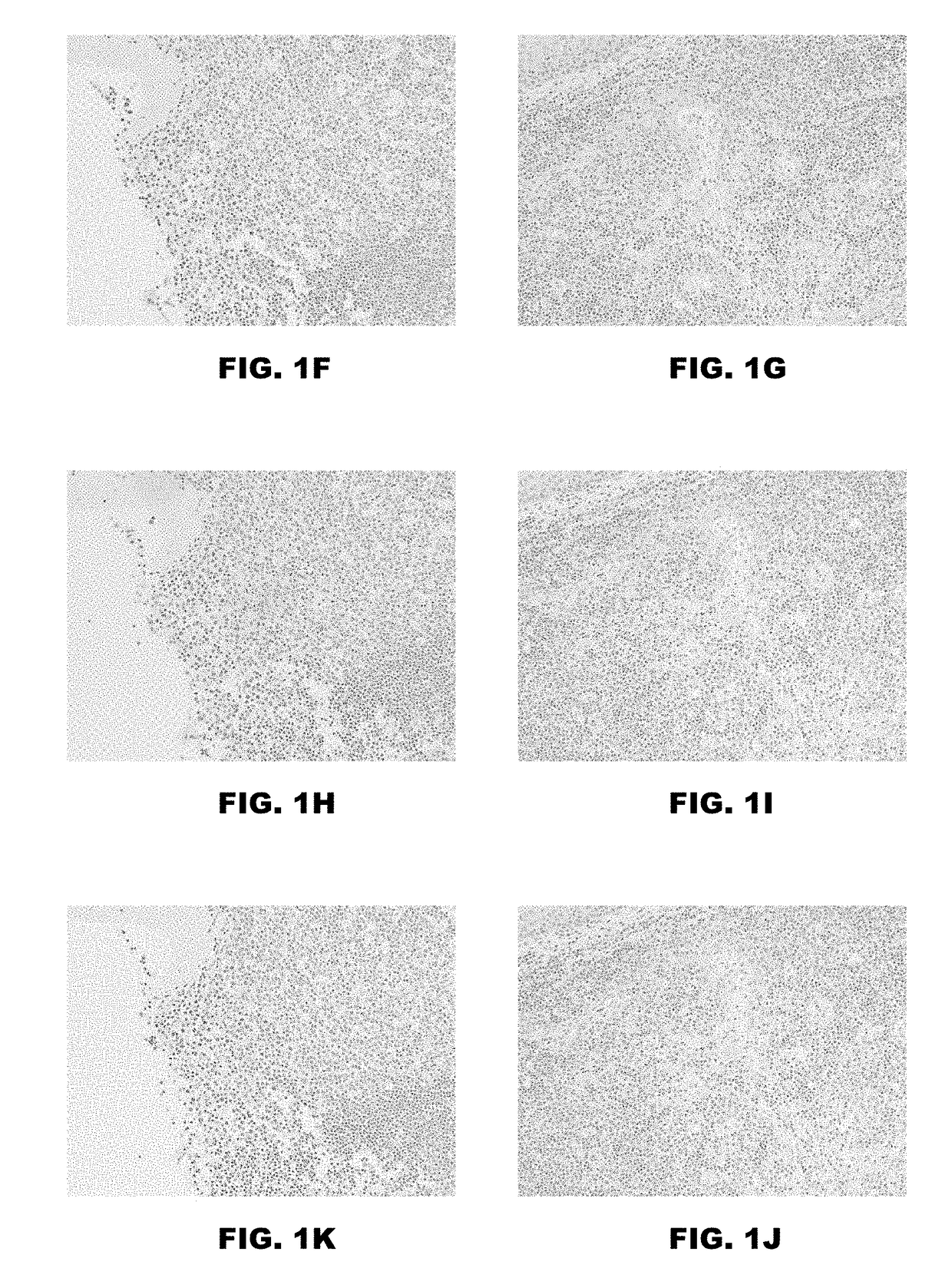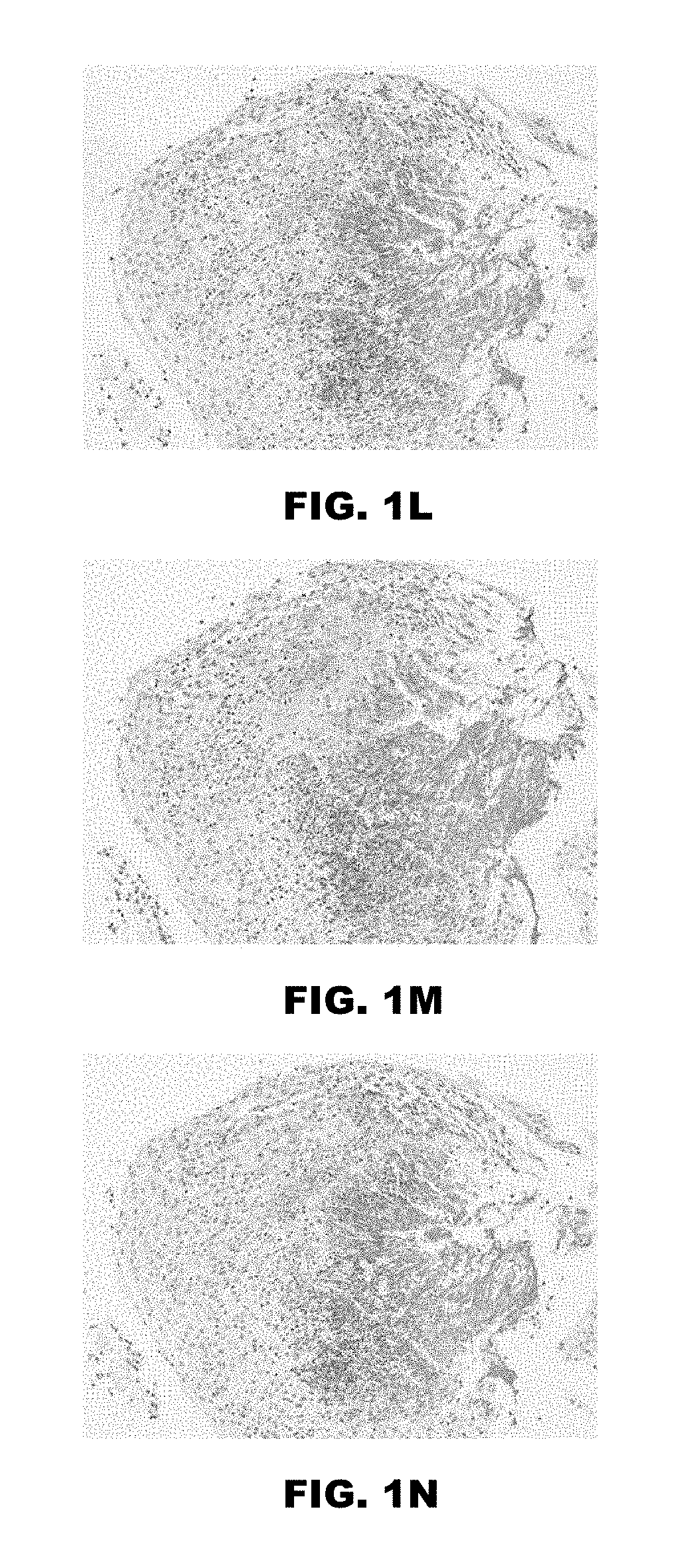Compositions and methods for simultaneous inactivation of alkaline phosphatase and peroxidase enzymes during automated multiplex tissue staining assays
a technology of alkaline phosphatase and peroxidase enzymes, which is applied in the direction of chemical treatment enzyme inactivation, luminescence/biological staining preparation, instruments, etc., can solve the problems of inability to completely inhibit both endogenous and reagent enzyme activity, affecting the staining accuracy of tissue staining, and requiring a significant amount of time for enzyme inactivation, etc., to achieve the effect of short tim
- Summary
- Abstract
- Description
- Claims
- Application Information
AI Technical Summary
Benefits of technology
Problems solved by technology
Method used
Image
Examples
example 1
Reagent pH on Peroxidase Inhibition / Inactivation
[0305]The Ventana ultraView Universal DAB IHC Detection kit was used during this study. The desired enzyme inactivation step was inserted into the general protocol described above after the ultraVIEW Universal HRP Multimer (VMSI, #253-4290) detection step and before ultraVIEW Universal DAB chromogen deposition. The enzyme inactivation step was performed at about 37° C. for about 16 minutes. Antigen retrieval was performed using Ventana CC1 for about 8 minutes. The Ventana Confirm MsAntiCD20 (Clone L26, VMSI #760-2531) primary antibody was used at about 37° C. for about 16 minutes. HRP inactivation / denaturation pH dependence was verified through treatments with 1M citrate buffer with pH=about 1.5 to about 3.0 at about 0.5 unit increments. An increase in reagent pH caused an increase in the puddle pH to which the tissue was exposed when about one drop of the composition was added to the Ventana Reaction Buffer puddle (Reagent pH / Approxim...
example 2
Reagent Application Temperature on Peroxidase Inhibition / Inactivation
[0306]The Ventana ultraView Universal DAB IHC Detection kit was used during this study. The desired enzyme inactivation step was inserted into the general protocol described above after the ultraVIEW Universal HRP Multimer (VMSI, #253-4290) detection step and before ultraVIEW Universal DAB chromogen deposition. The enzyme inactivation step was performed with variable temperatures and incubation times. Antigen retrieval was performed using Ventana CC1 for about 8 minutes. The Ventana Confirm MsAntiCD20 (Clone L26, VMSI #760-2531) primary antibody was used at about 37° C. for about 16 minutes. The composition's impact on tissue antigen detection signal intensity was believed to be affected by a combination reagent pH, application time and temperature. The 1M citrate base (pH=about 1.5) was investigated at elevated temperature to determine how temperature could help shorten enzyme inactivation. It was shown that the i...
example 3
Additional Additives on Peroxidase Enzyme Inactivation
[0307]A citrate based enzyme inactivation reagent required an antibacterial reagent to achieve targeted shelf life. The expected reagent pH=about 1.5 to about 2.0 was at or below the tolerant pH range for Proclin® reagents. It was believed that Proclin 950 had a pH tolerance range of pH=about 2 to about 12, and the other Proclin reagents pH had a tolerance of pH≥about 2.5. Sodium azide (about 0.08 wt %) was determined to be a viable bacteriostatic preservative option since it was believed that it not only acted as bacteriostatic oxidase inhibitor but could also reversibly inhibit peroxidases.
[0308]The Ventana ultraView Universal DAB IHC Detection kit was used during this study. The desired enzyme inactivation step was inserted into the general protocol described above after the ultraVIEW Universal HRP Multimer (VMSI, #253-4290) detection step and before ultraVIEW Universal DAB chromogen deposition. The enzyme inactivation step wa...
PUM
| Property | Measurement | Unit |
|---|---|---|
| temperature | aaaaa | aaaaa |
| temperature | aaaaa | aaaaa |
| temperature | aaaaa | aaaaa |
Abstract
Description
Claims
Application Information
 Login to View More
Login to View More - R&D
- Intellectual Property
- Life Sciences
- Materials
- Tech Scout
- Unparalleled Data Quality
- Higher Quality Content
- 60% Fewer Hallucinations
Browse by: Latest US Patents, China's latest patents, Technical Efficacy Thesaurus, Application Domain, Technology Topic, Popular Technical Reports.
© 2025 PatSnap. All rights reserved.Legal|Privacy policy|Modern Slavery Act Transparency Statement|Sitemap|About US| Contact US: help@patsnap.com



